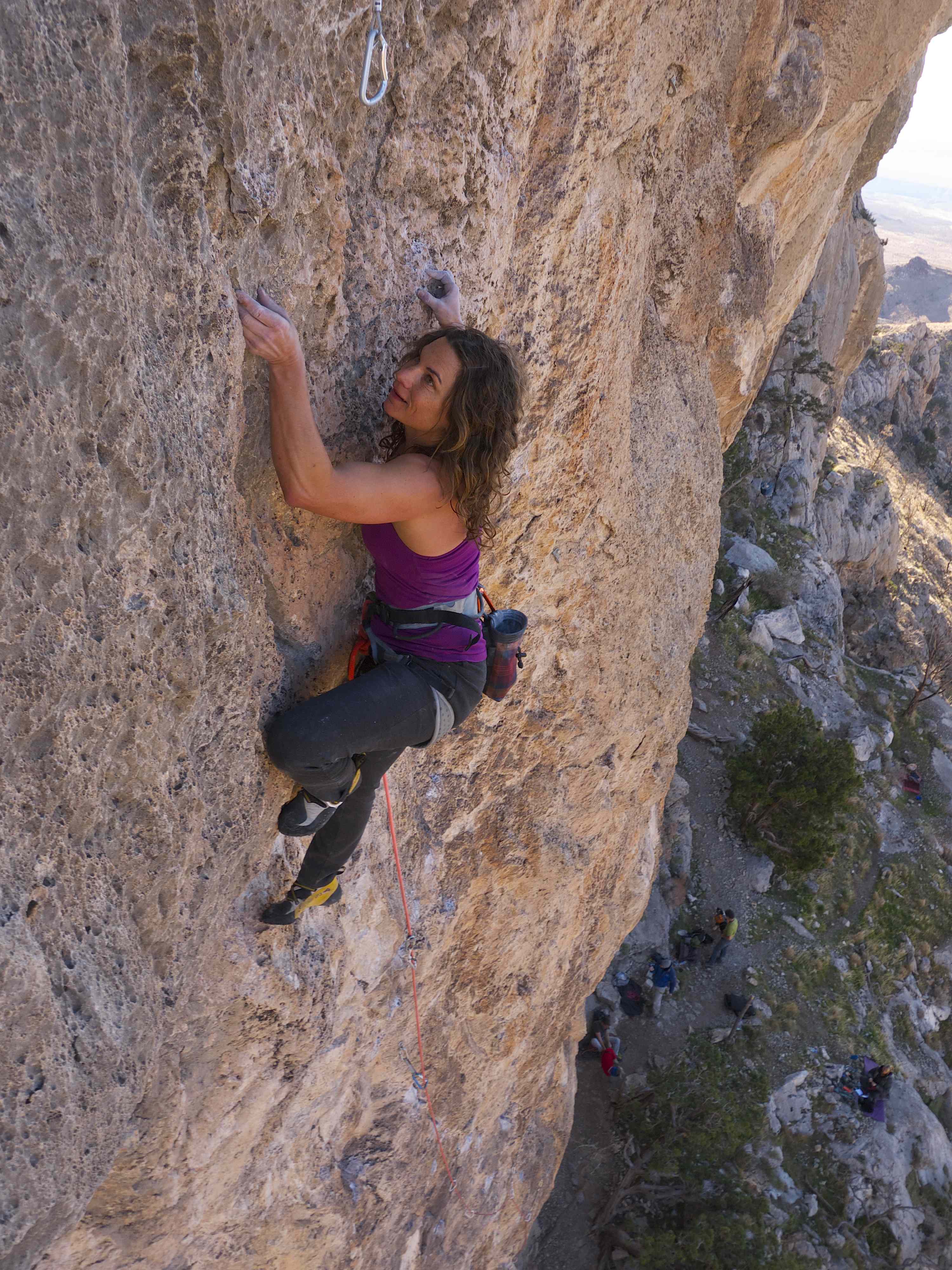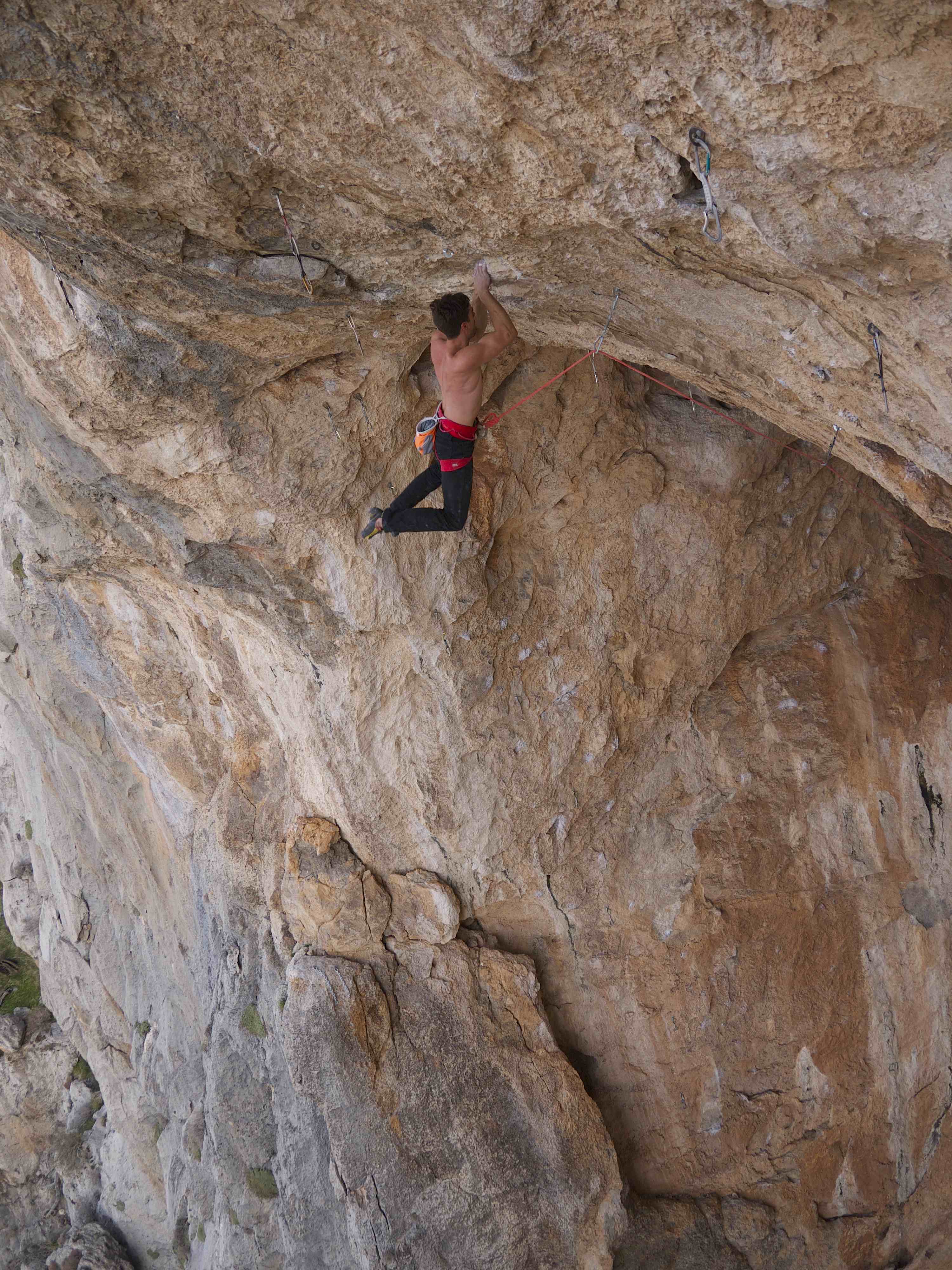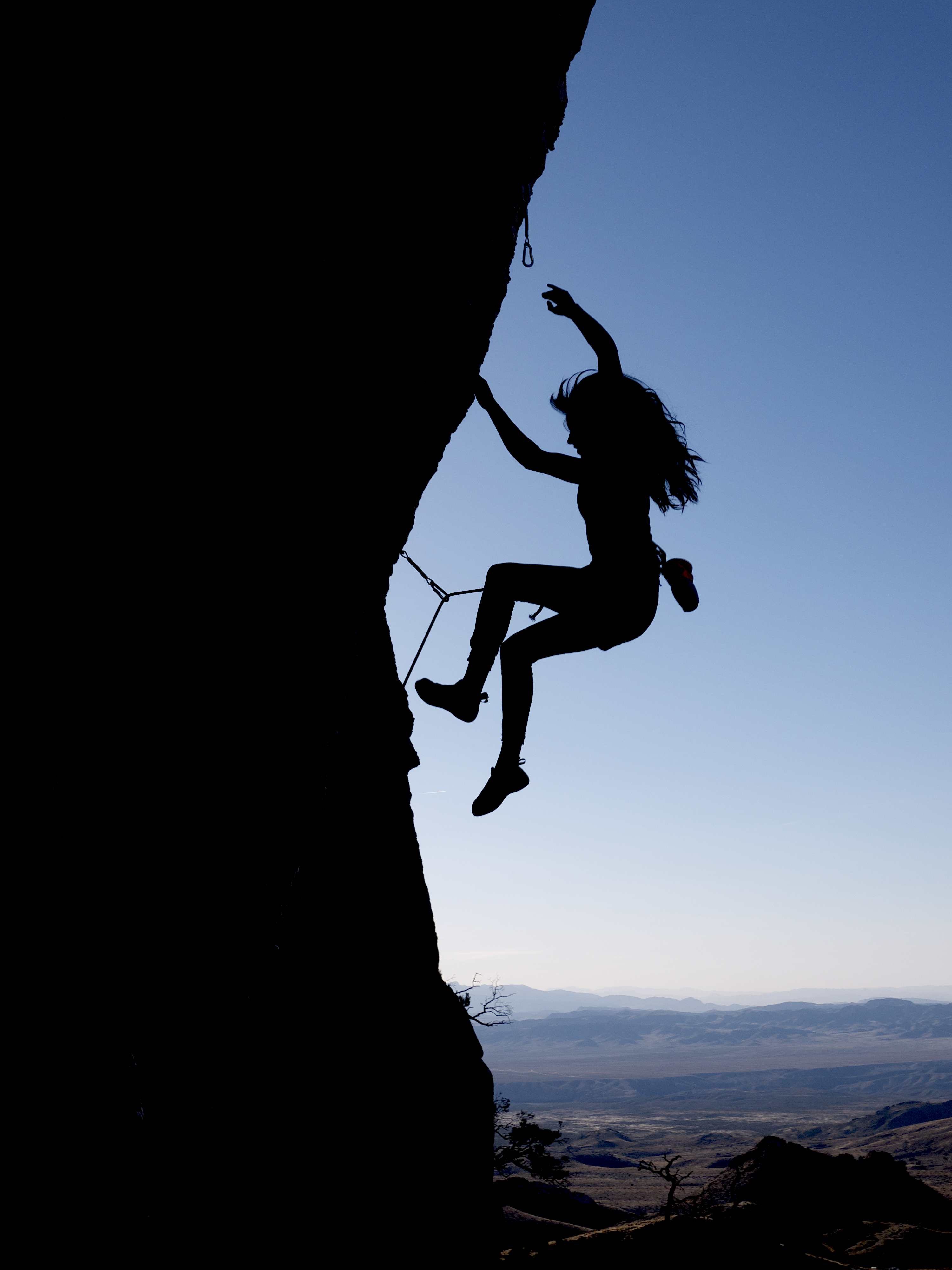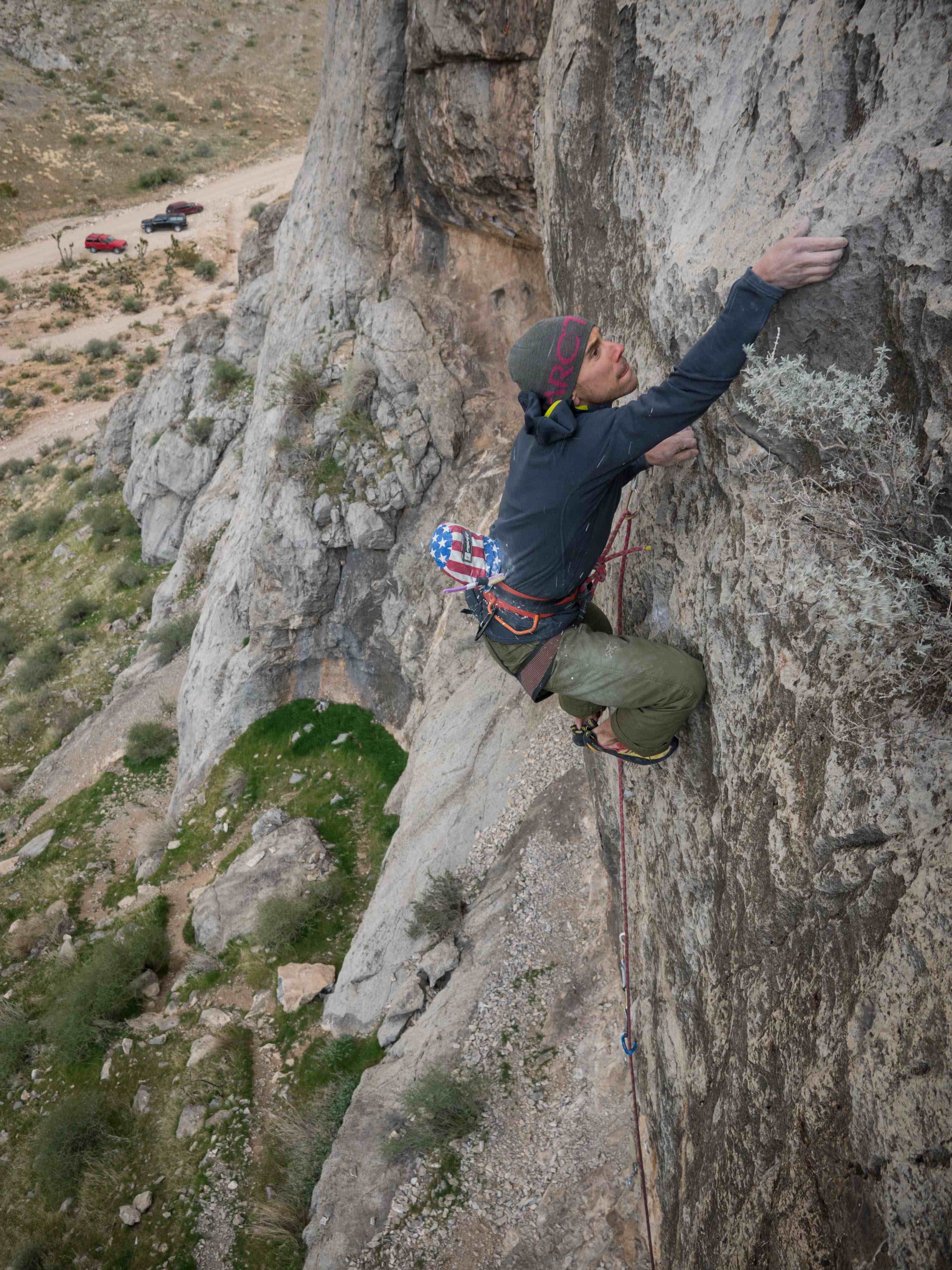Mary-Kate fought through a series of pockets. At the last bolt, she grabbed a sidepull, pressed her foot onto nothing and made a delicate mantle to the anchors. Ecstatic, she clipped the anchors of Pocket Line, a 5.11 at The Wailing Wall, sending her hardest sport route to date.

Mary-Kate, a long time boulderer, has enjoyed the new transition into sport climbing. “It’s humbling and super fun,” said Mary-kate. One of the best parts about trying a new aspect of climbing is the quick acceleration. The learning curve moves quickly. No matter what your experience level, learning to sport climb can be a challenge. Below are a few tips on beginning to sport climb.
Warm Up Well
Some crags have plenty of warm-up routes and picking a suitable route is easy. At crags like Jailhouse, the warm-up can be a project. Make sure to warm-up properly. Hang if you get pumped to avoid the dreaded flash-pump, where your forearms fill with lactic acid and recovering becomes impossible. Climbing the bottom of a route several times can be a good way to loosen your muscles. Traverse the base, do a short run, swing your arms, or be like Ethan Pringle and bring a jump rope to the crag.

ABS- Always Be Sending
Sport climbing can send people deep into project mode. You try a route once then suddenly you’re spending days interrogating the route for better beta. You focus only on sending that one route and each day at the crag becomes a routine. Escape the bad habit of total route fixation. Make sure to mix it up a little bit and climb easier routes that you can complete quickly. This will teach you how to fight to redpoint and give you confidence on your project. “Climb at a place where you can succeed,” said Mary-kate. This will keep your confidence high, a crucial ingredient to climbing hard. It will also increase your technique for climbing other routes as well.

Be Comfortable
Feeling relaxed on a sport route is essential. Breathe well. Move efficiently. Despite 13 years of climbing, I still get terrified climbing. To overcome my fear on a difficult route, I test falls. “Every time I fall, I get less scared,” said Mary-kate. Being comfortable with the falls will help you move fluidly and well. Make sure you know where you’re clipping from. It’s easiest to clip when the draw is at your chest or waist. Depending on where the good holds are, you may need to clip from lower or higher. Be aware of which way the carabiner gate faces and clip quickly.

Strategize
There’s a ton of strategy involved in sport climbing. To redpoint the most difficult routes involves being extremely efficient. Learn the basics of dogging up a route, how to rest well on holds, and how to memorize long sequences of beta. If you fall onsighting a route, make sure to figure out all the beta so that you can climb it better your second try. Also climb where and when conditions are good. Sometimes that means waking up early. More than anything, the best sport climbers are tenacious. Get after it!

